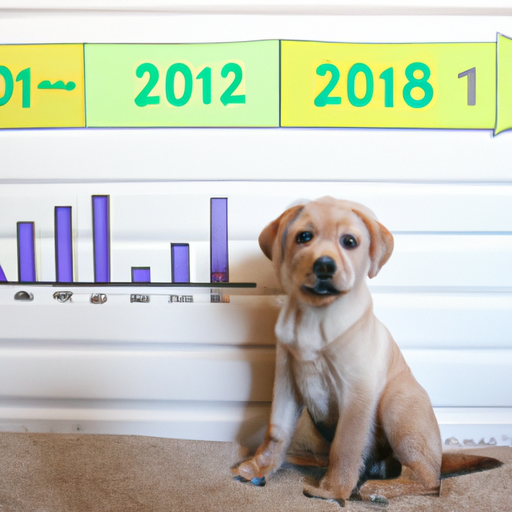As a caregiver, understanding the growth process of your canine companion is crucial. So, when is your dog actually full grown? Let’s dive deeper into this topic.
Understanding Your Dog’s Growth – The Basics
Firstly, you need to understand that different breeds of dogs grow at different rates. Size, genetics, nutrition and overall health are some of the factors that can influence your dog’s growth rate.
- Small Breeds: They typically reach adult size within 6 to 9 months.
- Medium Breeds: They generally reach adulthood between 9 to 15 months.
- Large Breeds: They may continue to grow for up to 24 months or even longer in some cases.
The Role of Genetics in Your Dog’s Growth
Your dog’s breed plays a significant role in determining when it will stop growing. Each breed has a genetic blueprint that dictates growth patterns. For example, a Chihuahua will stop growing much sooner than a Great Dane.
Importance of Nutrition in Dog Growth
What you feed your dog also plays a crucial role in its growth. A balanced diet rich in protein, vitamins and minerals is essential for healthy growth.
- Protein: Essential for muscle and tissue development.
- Fats: Needed for energy and coat health.
- Carbohydrates: Provide energy and aid digestion.
- Vitamins and Minerals: Vital for bone development, immune function, and overall health.
Monitoring Your Dog’s Weight Gain
It’s important to regularly monitor your dog’s weight. Sudden weight gain or loss can be a sign of health issues. A healthy weight table might look like this:
| Dog Size | Average Adult Weight |
|---|---|
| Small | 5-15 lbs |
| Medium | 15-40 lbs |
| Large | 40-80 lbs |
| Giant | 80+ lbs |
Physical Changes in a Full Grown Dog
There are some physical signs to look out for that indicate your dog has stopped growing:
- Teeth: Once your dog has its full set of adult teeth, it’s likely near its full size.
- Paws: When a puppy is going to grow into a large dog, they often have oversized paws. Once the rest of the body has caught up with the paw size, growth has likely stopped.
- Height and Length: When your dog is no longer growing in height and length, it’s a good indication they have reached their full size.
Behavioral Changes in a Full Grown Dog
Behavioral changes are another sign your dog has reached adulthood. Adult dogs are generally calmer and have a lower energy level than puppies. They also have a shorter attention span and are often less interested in playtime.
Regular Vet Check-ups
Regular vet check-ups are vital in monitoring your dog’s growth and overall health. Your vet can provide a more accurate estimate of when your dog will stop growing based on its breed and individual growth pattern.
Frequently Asked Questions
How do I know if my dog is overweight?
Look at the shape of your dog from above. There should be a noticeable waist between the ribs and hips. If your dog’s waist is as broad as its ribs or hips, your dog might be overweight.
Can neutering or spaying affect my dog’s growth?
Yes, neutering or spaying can affect a dog’s growth. Dogs that are spayed or neutered before they stop growing may grow a bit taller than they would have otherwise.
My dog is past the typical growth period for its breed, but still seems to be growing. Should I be worried?
Not necessarily. Some dogs simply grow at a slower pace than others. However, if you’re concerned, it’s always a good idea to consult your vet.
Can I increase my dog’s growth rate?
While providing proper nutrition can support healthy growth, trying to speed up your dog’s natural growth rate can lead to health problems. It’s best to let your dog grow at its own pace.
Remember, every dog is unique and may not fit perfectly into these general guidelines. It’s always best to consult with your vet if you have any concerns about your dog’s growth.



